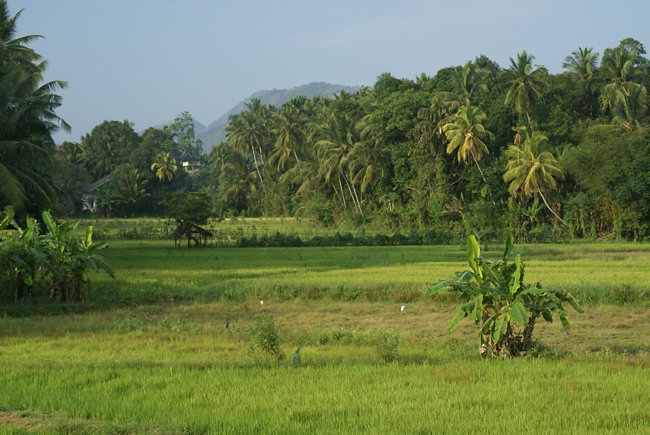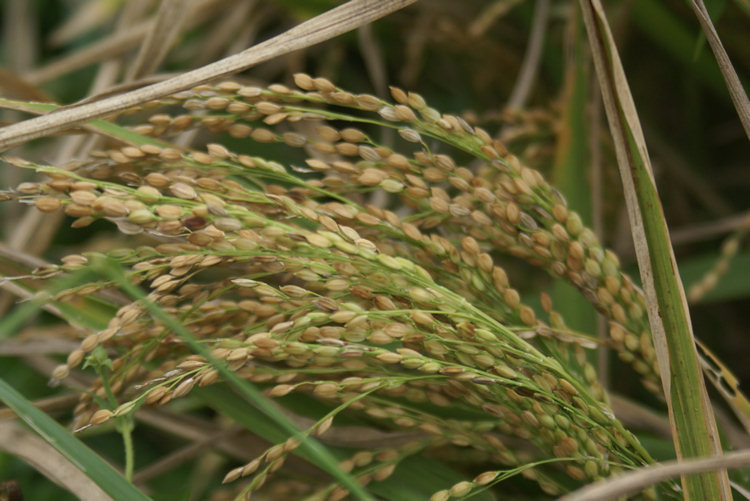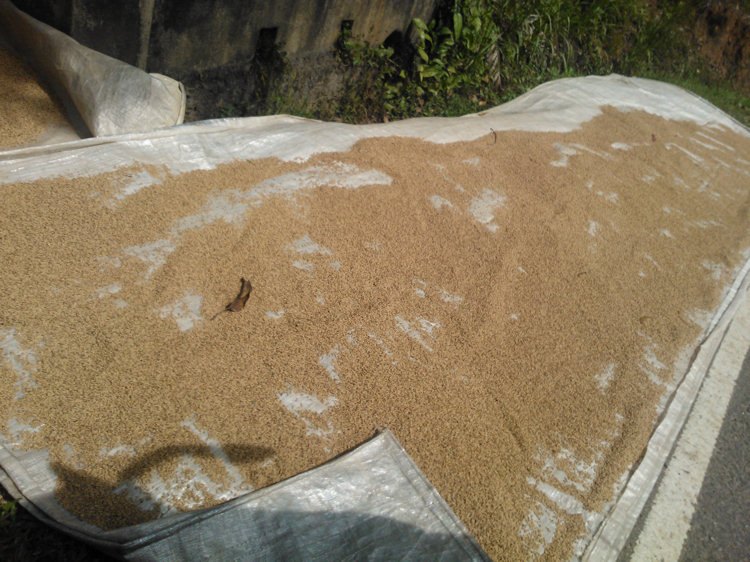Sri Lanka rice cultivation in Paddy Fields
When you look out of the train window as it rattles along the old rail tracks, you see miles of palm tree lined green fields. At first I thought they were fields of grass grown for cattle food but then the penny drops. What I am looking at are fields and fields of ripening rice.

Sri Lanka rice cultivation in Paddy Fields
It depends on what time of the year you visit Sri Lanka as to what you see. This was the view in February. The rice crop was a few weeks away from harvest. If you visit during the start of the season you will see flooded fields being planted by hand with young rice plant seedlings.
I thought that they were planted in water as rice was an aquatic plant. I was told the real reason it is planted in flooded rice paddy fields is to protect it from being eaten by vermin and weeds. Rice does not need to be planted in flooded fields but you get a better crop if it is planted in this manner.
All around the Sri Lankan countryside you will see small lakes. They are referred to as 'tanks'. They are normally man made reservoirs where the water is held back by a dam. The water is used to irrigate the rice fields.

Sri Lanka rice growing in Paddy Fields
Too much rain or drought can damage the rice harvest. Sri Lanka produces just over 4 million tonnes of rice each year. Rice is harvested twice a year. One is dependent on irrigation whilst the other on the monsoon rains. The farmers use two types of seed.
One that takes five months to mature and is used for the main harvest and a seed that matures in three months. This later seed is used for the secondary shorter growing season. Rice is important element of the Sri Lankan diet. It accounts for 45% of their average daily calorie intake.
The Sri Lankan Department of Agricultures figures show that about 70% of the cultivable land on the island is used for growing rice. About 64% of the total rice production is grown during the longer dry season whilst 35% is grown in the shorter wet season harvest.

Sri Lanka rice drying on the road side in the sun
The word 'paddy' comes from the Malaysian word for a rice plant which is 'padi' and has nothing to do with Irishmen. Traditional methods are still used in the cultivation of rice. You will see farmers using cows and water buffalo to drag a ploughs through the earth. They are ideally adapted to working in a flooded muddy environment. Just under 900,000 families are engaged in working paddy fields to produce enough food for themselves as well as some extra grain they can sell as a cash crop. The modern word 'Rice' is believed to come from the old Tamil word for this grass 'arisi'.
Most Sri Lankan farmers harvest the rice with long knives and tie bundles of rice bearing grass together. They leave them in the fields to dry and then thrash them so the rice seeds drop onto the floor. You may be luck to see rice being dried along the side of the road. The rice grain is placed on sheets or tarpaulins and placed in the sun. It is moved regularly to assist in the drying process. When the outer layer of the husk is removed you have brown rice. When the next layer, the bran layer is removed you get white rice.
Travel books

